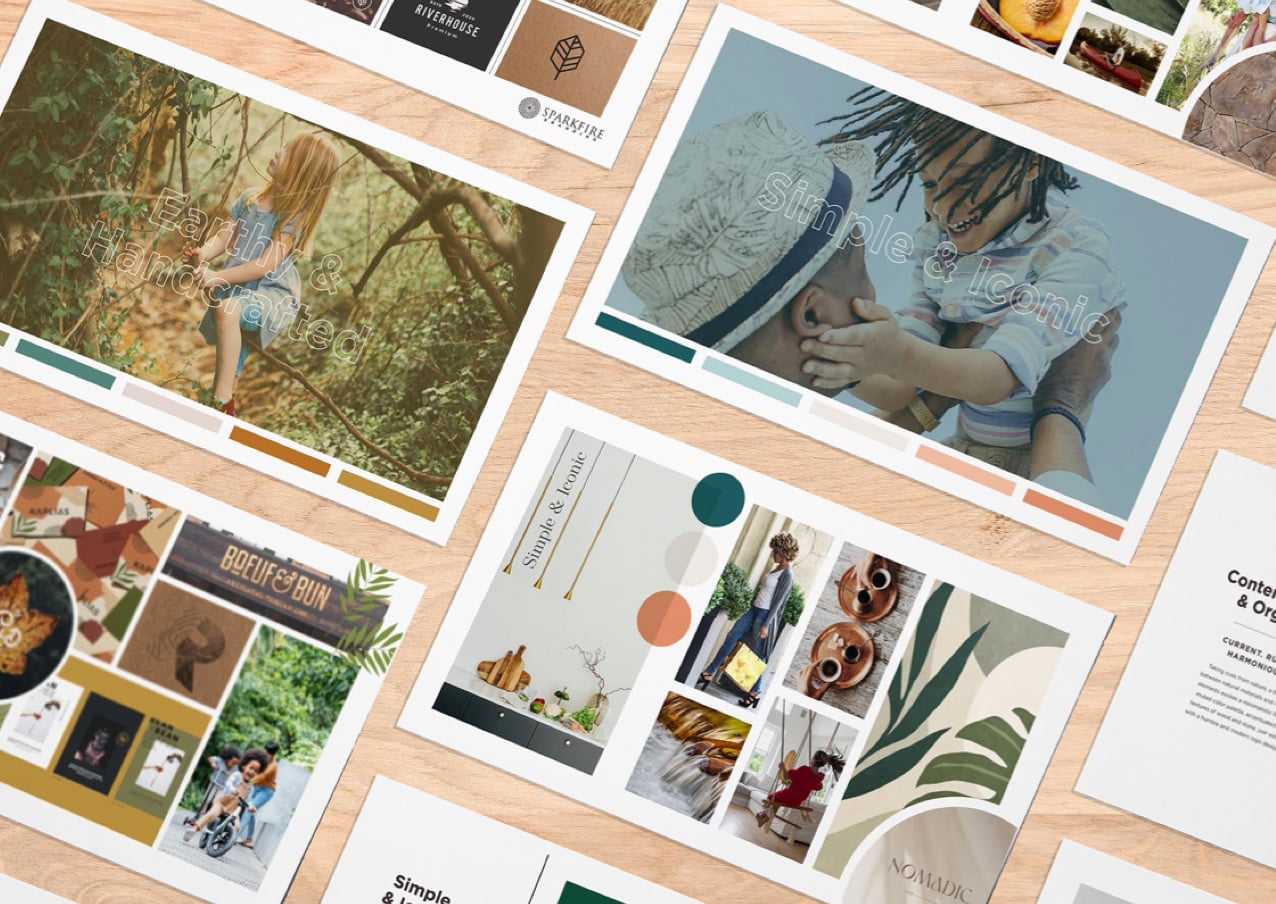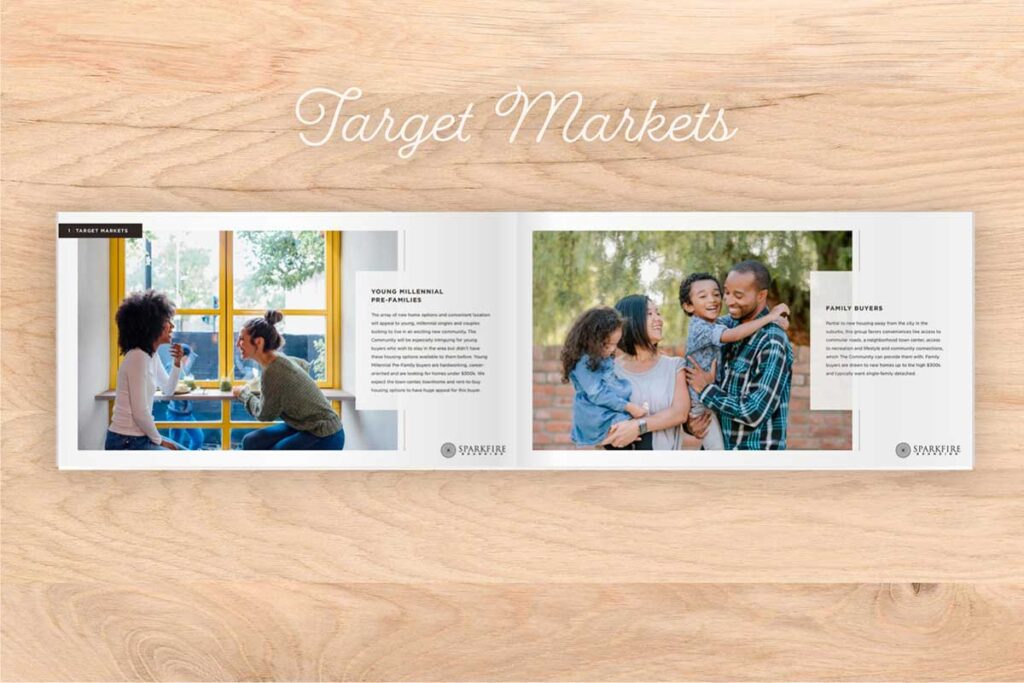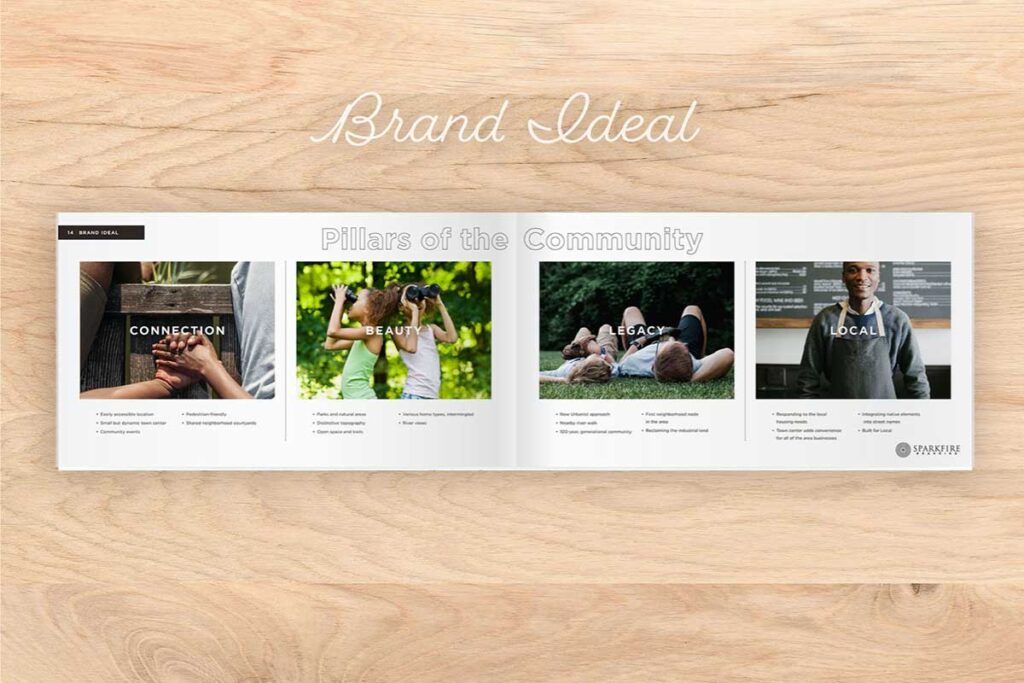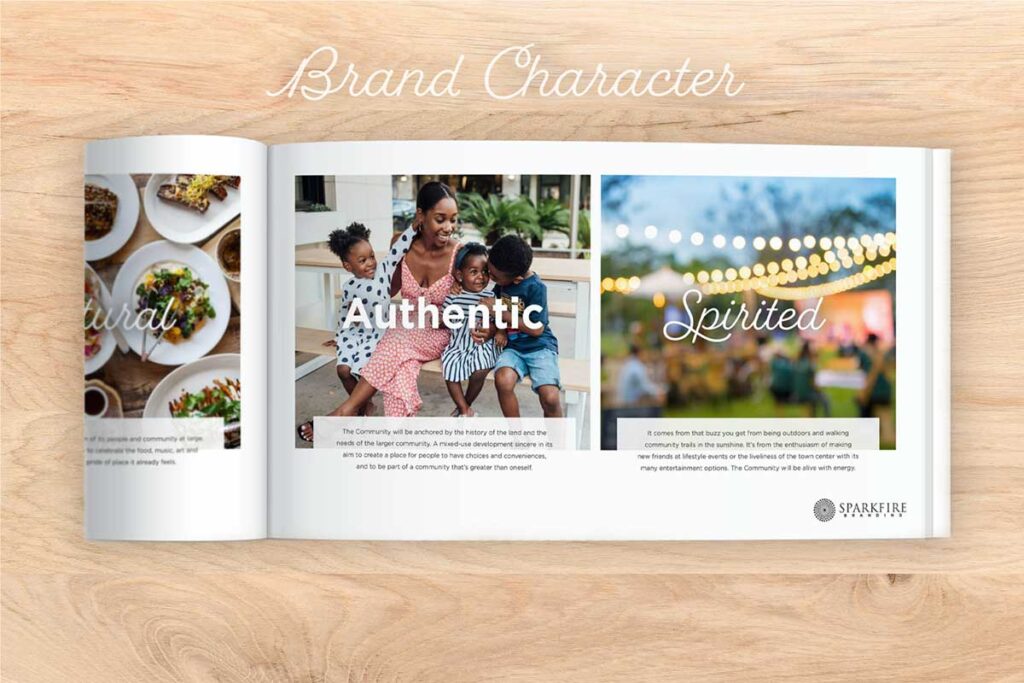Want to keep SparkFire at your fingertips? Click the Share Icon  and then click "Add to Home Screen" to ADD THIS SITE TO YOUR HOME SCREEN TODAY!
and then click "Add to Home Screen" to ADD THIS SITE TO YOUR HOME SCREEN TODAY!

Your Brand Is Your Edge in an Ever-Changing Real Estate Market
November 30, 2022
The real estate landscape is shifting – what’s going to set you apart?
Homebuyers today are market savvy and they place a high value on authenticity and connection. So, as the market cools and buyers are faced with more options, how they perceive your brand may very well be the deciding factor in choosing your community—or your home—over the next.
Last month, we talked about market dynamics and what you can do now to make sure your community is in a strong position to compete. This month, we’re diving into the specifics.
Whether you work with an agency or try it on your own, you’ll need a strong foundation to build your brand platform.

Target Markets
The first step in your brand positioning is to identify your target markets so you know who your brand needs to resonate with most. But rather than consider them as groups, our best recommendation is to relate to them as individuals. Create a buyer persona for one person or family who represents each target market. What’s the life event that’s spurring a new home search? Where are they currently living? What’s their biggest frustration? What’s their highest hope for their next move? Remember that buying a home (and leaving a home) is the most emotional purchase decision most people will ever make, and choosing your community will have a huge impact on their quality of life.

Situation Analysis (S.W.O.T.)
Your community will have a unique combination of strengths, weaknesses, opportunities and threats. Often, the tendency is to want to focus only on strengths and opportunities. But there can be great placemaking and positioning opportunities in addressing weaknesses and threats, too. Your community may be in a remote area, for example, but that can lend itself to a hidden oasis feeling or bring an opportunity for recreation residents wouldn’t otherwise have.

Brand Ideal
Studies show most people will remember three or four main things about a new community. So, if you could have them be anything, what would they be? The discipline of determining that with your team can bring clarity and focus to your communications as well as to your land planning. This is really asking: what do you want to be known for? If you have an existing brand, you can also compare this to how your community is currently described, and look at how to address the gaps.

Brand Character
Our favorite places are a lot like our favorite people. They have a unique personality, and we enjoy spending time with them. How do you want people to feel when they interact with your community, and how do you want them to describe it? The personality attributes you identify will help you craft communications that reflect a brand character only your community can deliver.

Mood Boards
Finally, try to express your community’s personality visually. One of the best ways to do this can be through mood boards. We put together various color palettes, textures, type and photography styles to spark discussion about what feels on brand for your community. Most people don’t have a lot of language around design, but they know what feels right when they see it, so playing with a range of ideas can help you zero in on a design and feeling tone for your community, which will help guide brand elements going forward.
We hope this gives you some ideas for where to start with your brand positioning, but we know it’s a difficult thing to do on your own. If you want to make it a lot more fun (and effective), we love nothing more than to collaborate on developing distinctive brands.
If you’re ready to get off the ground, let’s connect!






